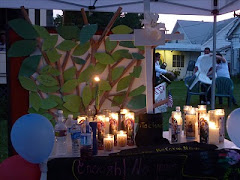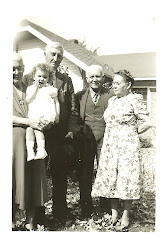BEGINNING THE STUDY OF THE PRESENT
After cycling, the coffee. After
cycling, Karen and coffee. After the lonely
night with Bonhoeffer, sunshine,
and Karen says, “Should we go get our shots?”
Yes, Let’s go. Flu and Covid. I carry
two copies of Harper’s—two essays
I read separately, ending summer, beginning
fall, each read twice, and a third time
at the pharmacy, 22 days before the election.
Yesterday’s Men, the Death of the Mythical
Method by Alan Jacobs, and Glimmers
of Totality, on Fredric Jameson at 90,
by Mark Greif, spelling correct. Quick
note: Jameson just died, on the third, after
a fall. Yesterday’s men, mine really, our
generation—Northrop Frye, Joseph Campbell--
didn’t know Giam Battista Vico, writing in 1725--
shorten the reign of barbarism. Jameson’s a Marxist,
his two characteristics of America: hypocritical
and shallow. After the second read,
transferred favorite sentences to notebook,
downloaded the e-book (couldn’t wait):
Inventions of a Present: The Novel
in its Crisis of Globalization. Here’s a sentence
from Greif: “Every intervention, rereading,
and retrospection by Jameson is about the present
and the wish to shape the future.” Our pharmacy’s
still locally owned, believe that? Karen takes
both shots in her left arm, and I take mine
in the right. Tieton Village Pharmacy. We’ve
known the pharmacist for years. Two years ago
when we had Covid at Christmas, he got us
going with Paxlovid. Karen quit after two pills.
I asked our guy to talk about virus and bacteria,
both in the context of Covid and composting.
“It’s been years since I had a microbiology class,”
he says, “bacteria’s more complex in cell structure.”
I just want to know how the worms get into the compost.
From Tieton we stop at Ace on our way home.
Karen wants purple and orange LED lights
for the porch during Days of the Dead.
White neighborhoods coming from Halloween
and commercial costume parties are catching up,
especially with skeletons—aka calaveras,
in the dominant culture in our town. I’m not
the Stage Manager. North America’s importing
ten-foot skeletons that fill lawns and houses--
no places to store these bones so large
there’s no place to store them. One neighbor
dresses hers according to the seasons. No one
knows the ancestors here, and to take them down
she’d have to take bedrooms from her children.
Skeletons come from computers don’t eat first.
How could these people ever tell a story?
Karen’s anxious to get back to her quilt.
Let me tell you what happened last night.
That night read with Bonhoeffer: Living
in community. “Whoever cannot stand being
in community should never live alone.”
A year like this.
Just after 2, my arms reach out, she’s gone.
Karen, I shout from bed. “I had an idea,”
she says from the other room. “I want to put
the chain fence behind Chuck’s portrait.”
Chuck’s a baseball coach. Women’s Fast Pitch
at the college. A memorial quilt. His wife died.
He brought by a stack of jerseys his arms
couldn’t hold. Karen’s been dreaming this
documentary into art for five months.
“You’re going to put a chain around Chuck?
How is that a vision?” Now we’re both up
walking around fabric. My brother’s
coached baseball for half a century.
How the day starts from dreaming. From
Jameson. Jameson’s goal: If you want to be
a fully dialectical thinker, you can’t be satisfied
with just the statement of one side.”
Nearly the size of a bedspread, Karen says
Chuck can never put it there. “He has dogs,”
This must be hung, it’s a statement about time.
Jameson’s voice is one of courage, implacable,
“...aware of the degree to which radical
efforts of late capitalism have been
conservative and traditionalist.”
Converted and re-functioned.
“He Names the System We’re Still Fighting,”
His obituary in The Nation headlines.
The Marxist is never safe he learns
after he champions a writer who turns
him into the FBI. “For, to be sure," Jameson writes in
Inventions of a Present, “our bodies themselves
are sick and poisoned with all the industrial waste
of the market civilization, which we relive
in the taste in our mouths…” And no one is better
his obituary states, than Jameson. He remains.
Today is National Indigenous Day,
and despite her fame, America doesn’t know
the Poet Laureate Joy Harjo. How could it recognize
her poem, Remember, when put on Facebook?
22 billion dollars is what it will cost Los Angeles
to end homelessness in a decade, L.A. Times reports.
45,000 homeless in the city. 29,000 unsheltered.
Less than 7 billion budgeted. Some want less expensive
strategies. In Seattle, Danny Westneat reports
in the Seattle Times that the Hope Factory’s tiny homes
sit empty where they’re built, 500 of them hammered
by volunteers, sent out as “colorful, 100-square foot
missionaries to get people off the ground.”
No one has a straight answer, he reports. Some like them
too much. Some call them shacks in Shantytowns.
The Hope Factory. In Yakima we have Camp Hope,
and tonight is our turn to serve dinner. Pulled pork
sandwiches, barbecue sauce, cole slaw, home-made
cupcakes. West Coast homelessness. Camp Hope
dinners in the army green tent. Marion tells me
to watch how much slaw I load on my spoon
as we’re expecting more people due to cold
weather. Sunny and beautiful, but cold.
Covid shots, flu shots, egg shells in compost
aids photosynthesis, strengthen cell walls in plants.
Jim Bodeen
14-16 October 2024













































































love this, starting with cycle and continuing as the wheel with a feel should.
ReplyDelete